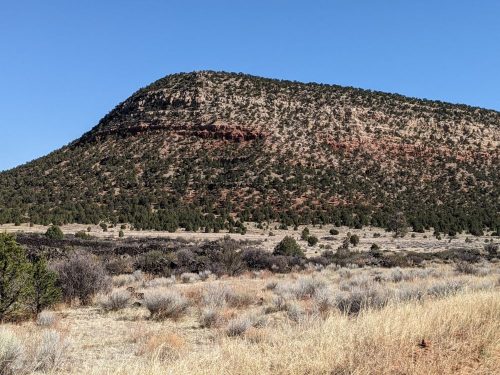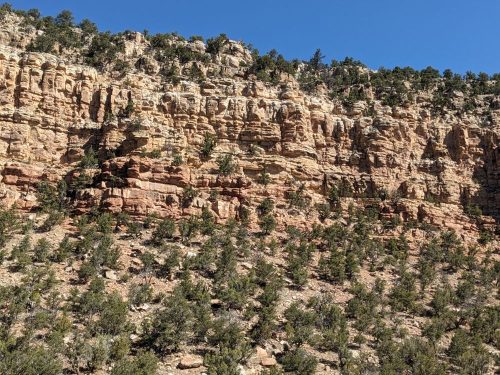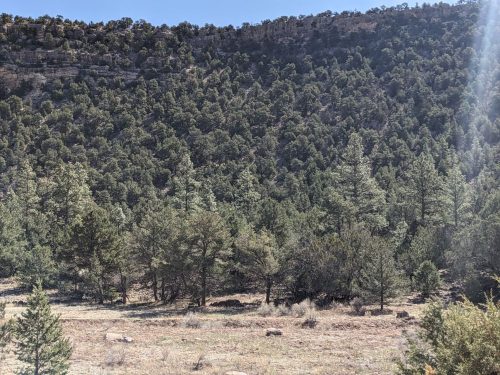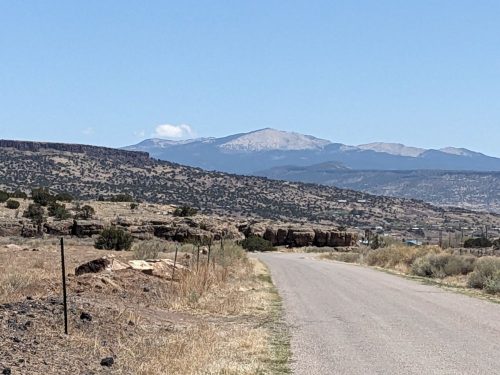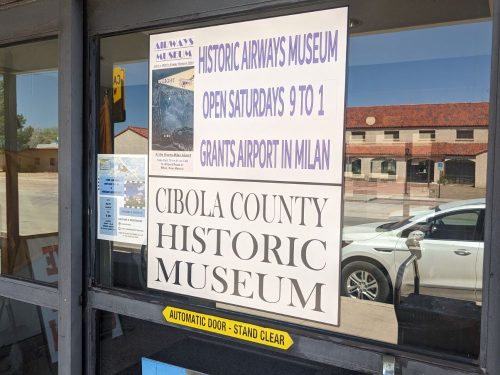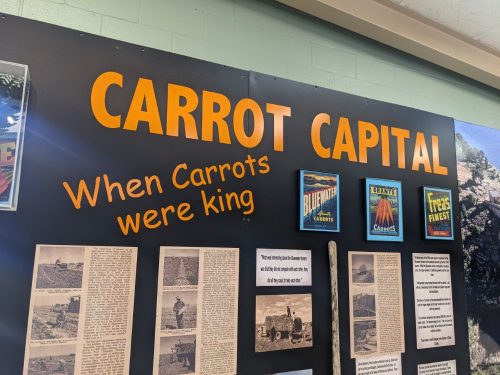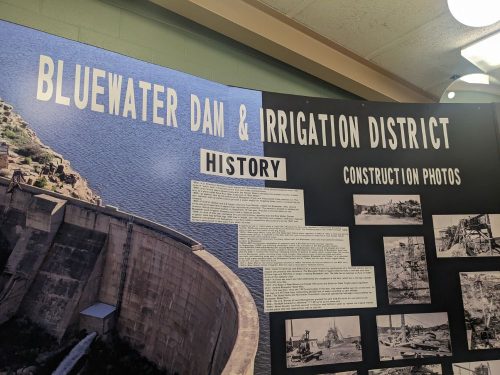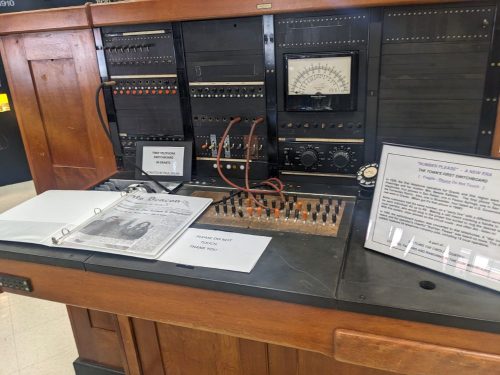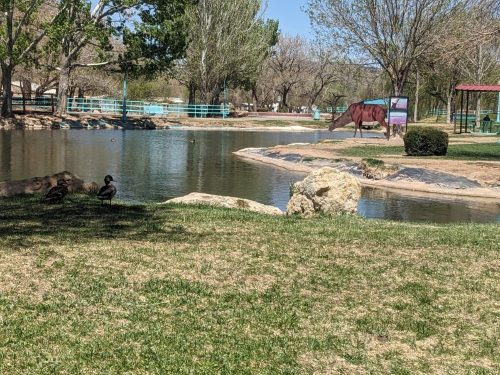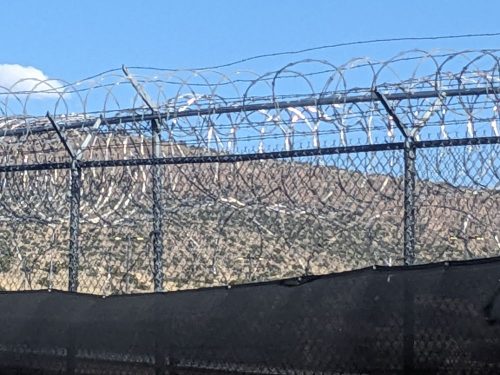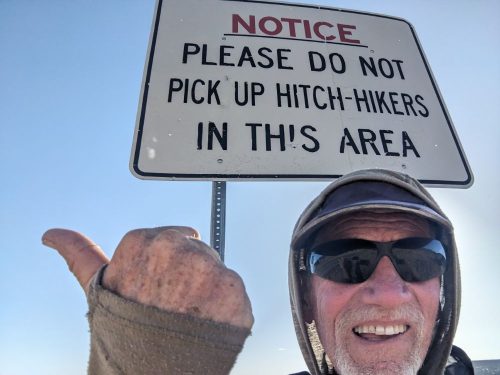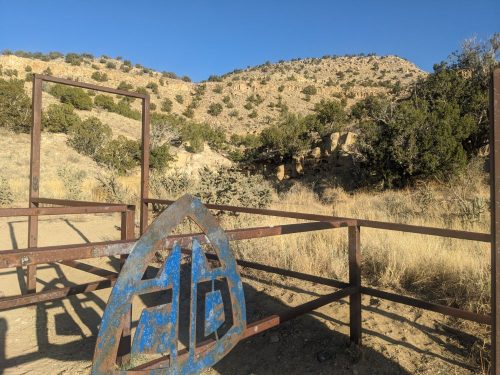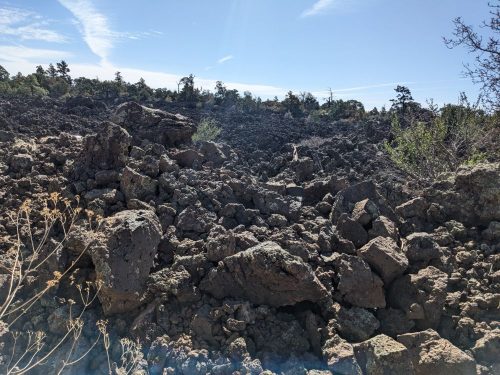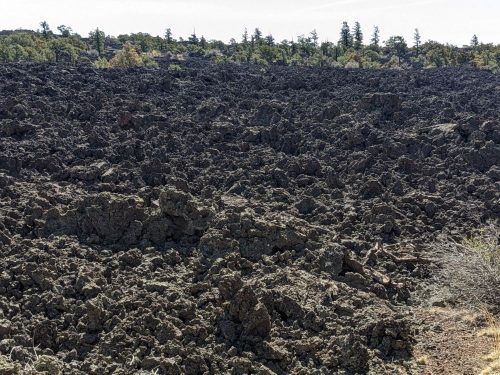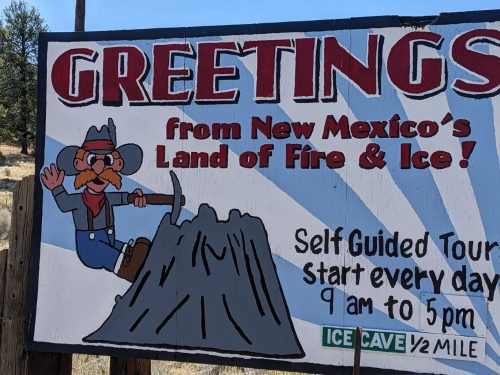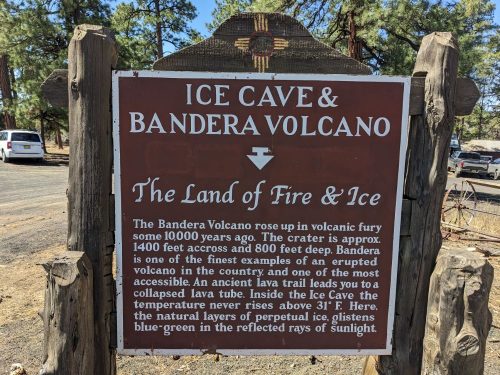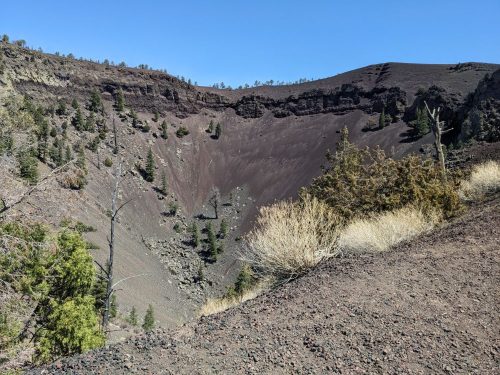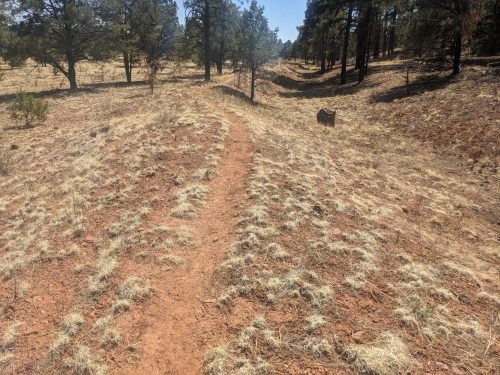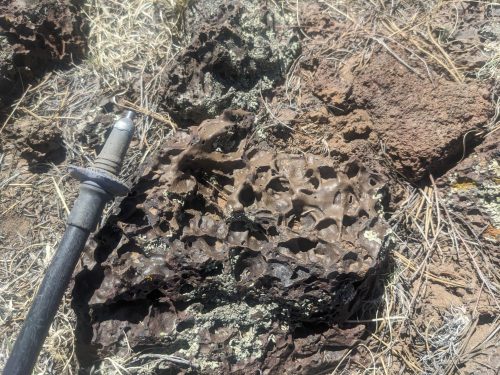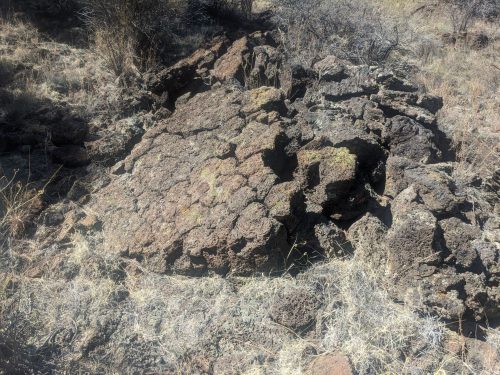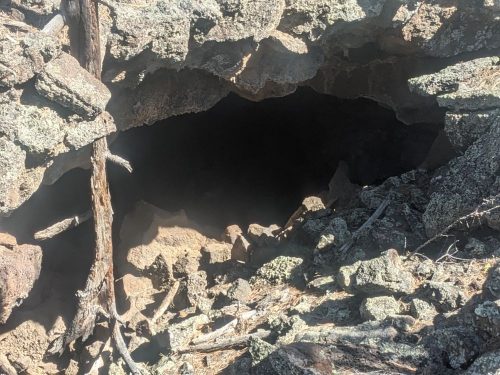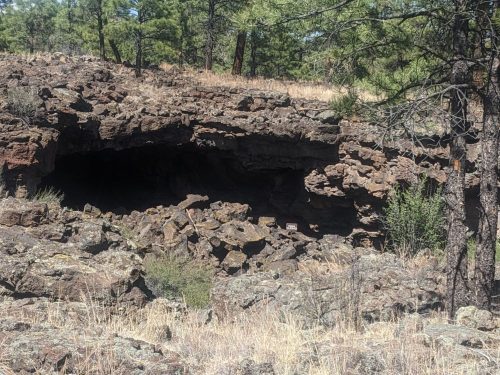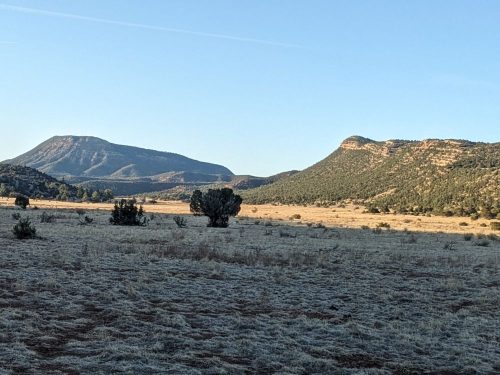- CDT NM 2025 Day 21, Sunday April 27
- Start CDT mile 530.5, in heights after trailhead north of town
- End mile 555.6
- Miles walked: 25.1
A view of Grants rewards an early morning climb.
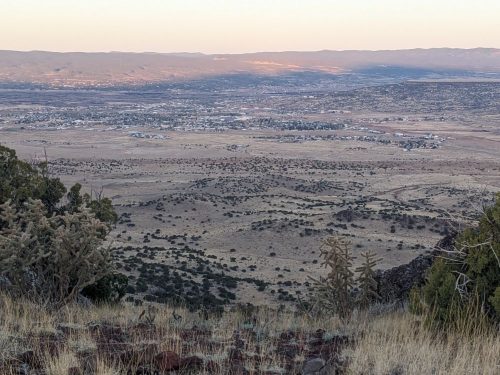
Someone added a bell to a cairn post, as the route continues on a mesa.
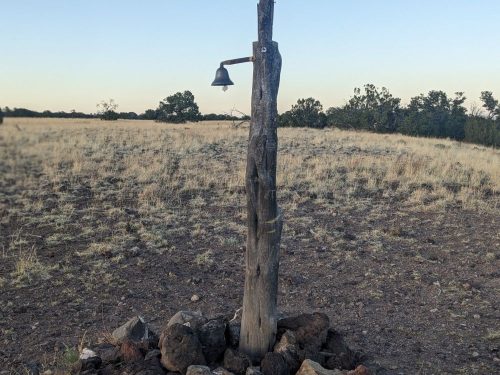
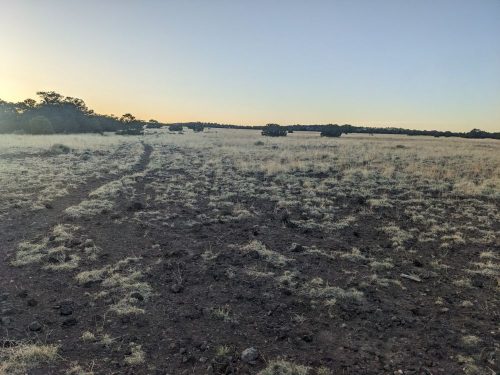
An alternate trail goes to the summit of Mt Taylor, but I stay on the red line.
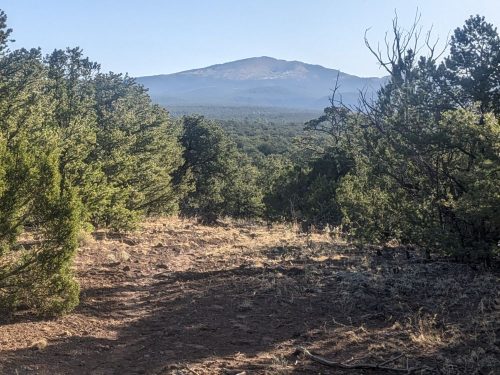
The route goes on some bewildering ups and downs today, with trees hiding the shape of the terrain. We are often at an elevation to have aspens, too early to leaf out.
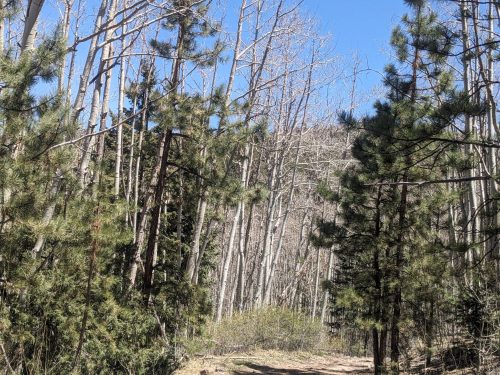
Thick forest with Ponderosa suggests a history of fire suppression, but I am just guessing.
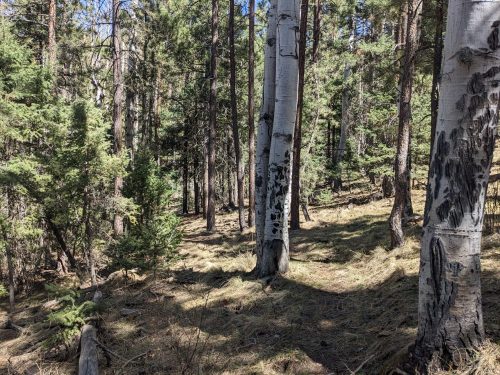
I meet a hiker, Kangaroo, the first I have seen for days.
Gradually we are losing elevation. I see an elk grazing on green grass. We haven’t seen grass actually green much on this trip.
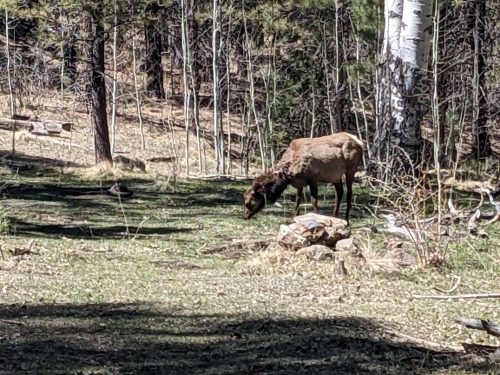
I meet a trail angel filling a water cache at the end of the day: Thanks for helping us hikers! It is several miles until the next good water.
Finished audiobook Star Ship, by Poul Anderson.
